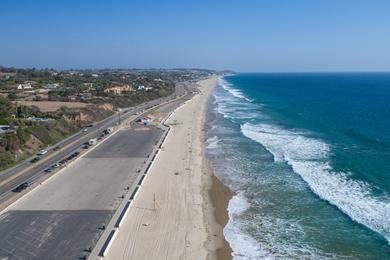Overview
Thresher sharks are easily distinguished by their extremely long, whip-like upper tail fin, which can be as long as their body. This tail is used to stun prey by striking it with forceful blows. Thresher sharks have a slender, streamlined body with a pointed snout and large, crescent-shaped pectoral fins. Their coloration is typically dark gray or blue on the dorsal side and white on the ventral side. Unlike other similar species, such as the common thresher shark, the pelagic thresher shark has a much longer tail fin, which can be up to twice the length of its body.
Commonly found in:
- Mexico
- Japan
- Brazil
- Chile
- Portugal
- Spain
- Italy
- France
- Ireland
- Norway
- Iceland
Over the past 98 years, there have been 5 recorded attacks by thresher sharks. Of these attacks, they have occurred at sea and at the following beaches:
Size and Weight
- Size: Males average between 10-13 feet when mature; females average between 11-14 feet when mature
- Weight: Males typically weigh 220-350 pounds; females typically weigh 260-400 pounds
- Swimming speed: Both sexes can reach speeds of up to 20-30 mph
Interaction with Humans
- Interaction with Humans: Rarely interact with humans, not considered dangerous
- Avoidance: Stay out of deep offshore waters, avoid areas with schools of small fish
- Activity: Most active at night and during twilight hours
Lifespan and Diet
- Lifespan: Males live approximately 20-25 years; females live approximately 25-30 years
- Diet: Primarily small schooling fish, occasionally squid and crustaceans
- Hunting Method: Uses long tail to stun or herd prey before consuming
Migratory Patterns
Thresher sharks exhibit seasonal migratory patterns. They typically move from coastal waters to offshore areas in the summer and return to coastal regions in the winter. In the eastern Pacific, they migrate from California to waters off Mexico and Central America. In the western Atlantic, they travel from New England to the Caribbean and Gulf of Mexico. Some populations in the Mediterranean Sea migrate between the western and eastern basins. These migrations are likely influenced by water temperature and prey availability.


